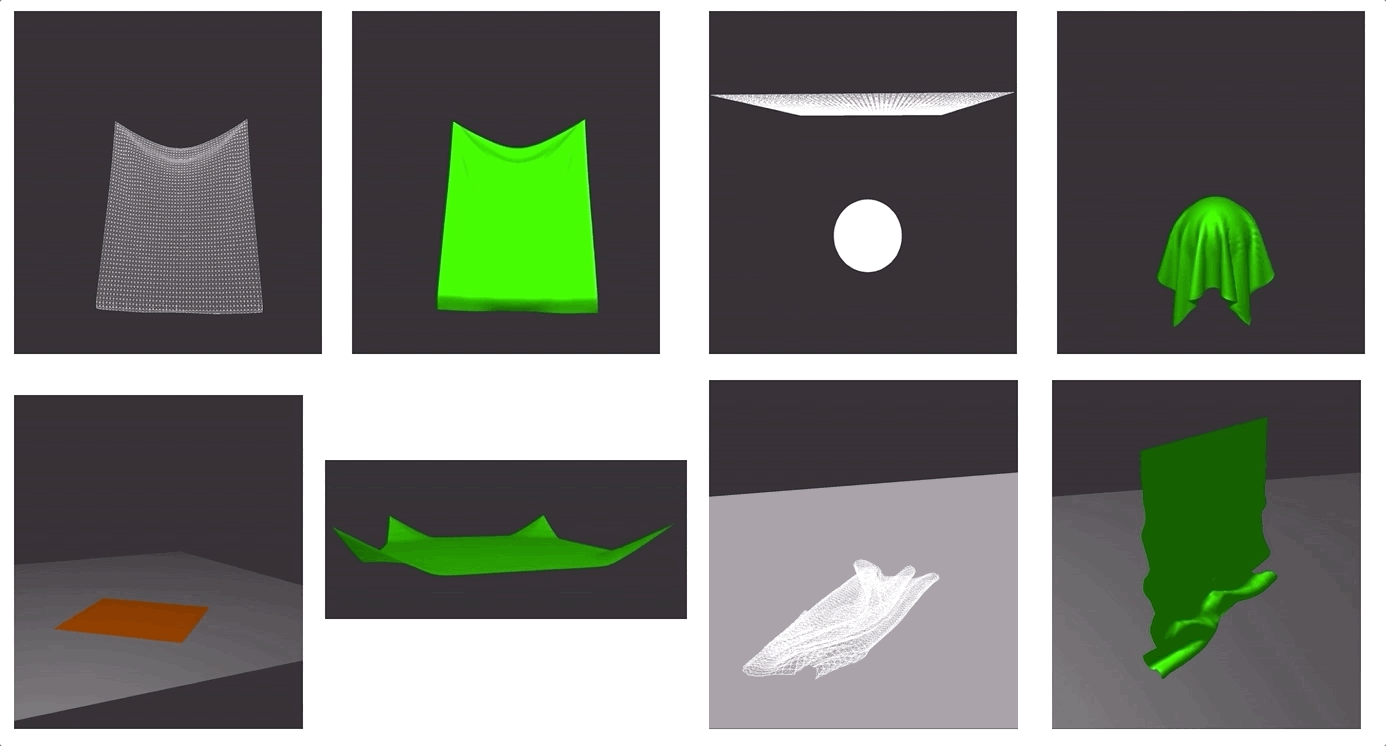A real-time cloth simulation engine
Upon request of the course staff, the source code will not be shown publicly on GitHub. The source code is currently password protected, zipped in src.zip. To request for the password for unzipping the source file, send me an email.
You can read my detailed writeup to understand what features I have implemented, how I developed them, see many of the cool results, and view side-by-side comparisons of the performance by different techniques.
Animation
Note: the following animation may take a while to load before it starts moving
Running the program with zero arguments will load up the default scene (scene/pinned2.json).
./clothsim
Otherwise, to load a specific scene, run the program as follows:
./clothsim -f ../scene/<my_scene>.json
To load a hanging cloth, run:
./clothsim -f ../scene/pinned2.json
To load a pinned cloth, run:
./clothsim -f ../scene/pinned4.json
To load a cloth falling on to a sphere, run:
./clothsim -f ../scene/sphere.json
To load a cloth falling on to a plane, run:
./clothsim -f ../scene/plane.json
To load a cloth falling onto itself, run:
./clothsim -f ../scene/selfCollision.json
Besides the actual graphical user interface that you can work with using your mouse to tweak cloth parameters and dynamically change external forces, there are several keyboard commands that you might find useful.
| Command | Key |
|---|---|
| Pause simulation | P |
| (while paused) Go forward 1 timestep | N |
| Restart simulation | R |
| End simulation | ESCAPE |
| Reset camera to default position | SPACE |
| Rotate camera | (click and drag, or right click) |
| Pan camera | (hold control + click and drag, or right click) |
If you don't have CMake (version >= 2.8) on your personal computer, you can install it using apt-get on Linux or Macports/Homebrew on OS X. Alternatively, you can download it directly from the CMake website.
To build the code, start in the folder that GitHub made or that was created when you unzipped the download.
You will need to unzip the src.zip to get the source code first!
Upon request of the course staff, the source code will not be shown publicly on GitHub. The source code is currently password protected, zipped in src.zip. To request for the password for unzipping the source file, send me an email.
Run
mkdir build; cd build
to create a build directory and enter it, then
cmake ..
to have CMake generate the appropriate Makefiles for your system, then
make
to make the executable, which will be deposited in the build directory.

